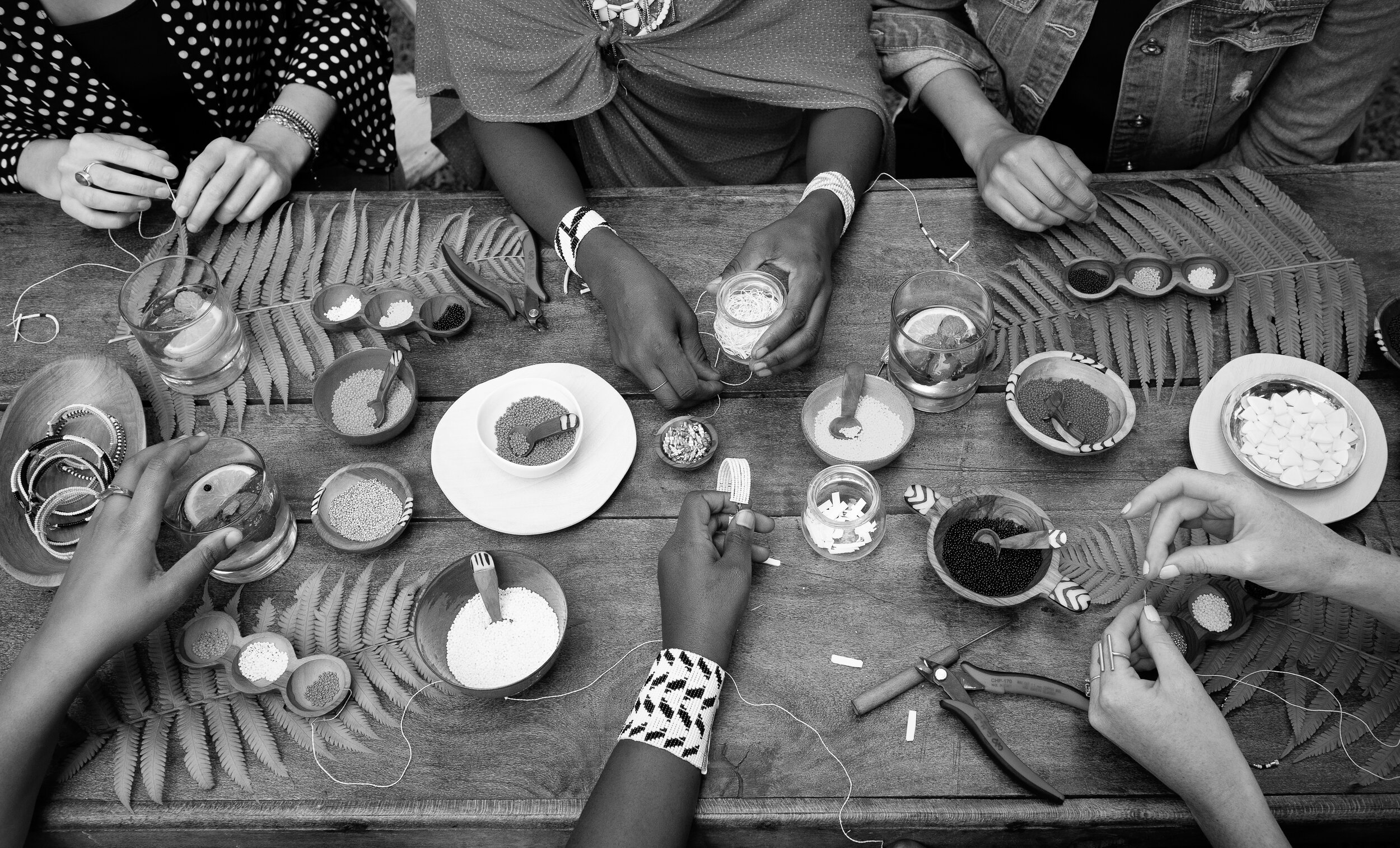Today’s trip is taking us to a continent I have yet to visit and that I am looking forward to falling in love with: Africa.
We are approaching the East coast, leading to an area encompassing Kenya and the North of Tanzania, to discover a beautiful cultural heritage typical of the population that inhabits these territories: the Maasai beadwork.
Maasai people are a Nilotic ethnic group that traditionally lead a semi-nomadic pastoral lifestyle, and that are known to many thanks to their peculiar jumping dance (adumu), performed during the initiation ceremony of young adults into warriors (eunoto).
But another cultural marker that is often associated with Maasai people is that of their incredible beadwork, colorful and intricate handmade pieces of jewelry that ornate both men’s and women’s bodies.
The Maasai practice of beadwork originates hundreds of years back and it is passed down from generation to generation. It is also one of their sources of income, as it is an object of trade with other tribes (which is how, with time, it became so popular even outside the Continent).
These ornaments were initially made from natural resources that Maasai people had available - like clay, wood, bones, copper… Until Europeans introduced glass around the 19th century - which, to date, is still the main material used for beads (together with plastic).(1)
Beadworks are not just an ornamentation of the body: they carry multiple meanings, from defining age and social status to the color-associated symbology.
Collar pieces are also believed to represent the map of Maasai villages, which are typically surrounded by circular fences, and where the central hole represents the cattles (2):
Credits: https://face2faceafrica.com
Colors are intertwined to symbolize Maasai’s paramount life principles, which are often associated with moments of their everyday life and are strongly related to cattles.
Red symbolizes bravery and unity: like the blood of a slaughtered cow, which is performed when the tribe assembles.
White represents health and purity: like milk, which comes directly from cows and gives strength to the tribe.
Blue stands for energy and the sky: the rain that falls from the sky provides a source of drinking water (therefore strength) to the cows.
Orange and yellow both mean hospitality: visitors are usually served milk from gourds and rest on animal skins that are usually of a yellowish color.
Green embodies health and land: cattle graze on grass, which ensures richer production hence health.
Finally, black: this color represents the people and the struggles they go through during their lifetime.
The art of creating beadwork masterpieces is traditionally taken care of by Maasai women.
But although beadworks are also objects of trade and income, this does not make them “providers” for their families: the Maasai culture is mainly based on patriarchy, it is men who take care of cattles and commerce, while women generally play a more marginal role in society. Also, Maasai girls still face obstacles to get into school, and only a low percentage actually makes it to a higher education. (3)
In the last few years, an increasing number of organizations are aiming to support women through empowerment, education and sustainable employment: creating Maasai-inspired jewelry and accessories has become an outlet for self-expression, self-esteem and empowerment, still preserving their cultural heritage and beading skills.
Credits: http://www.sidaidesigns.com/



